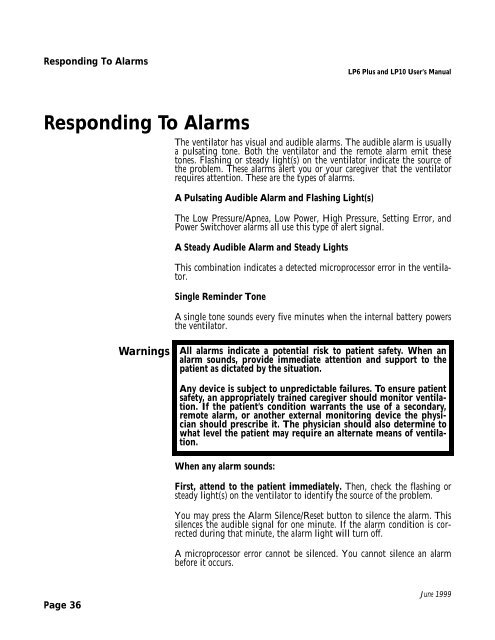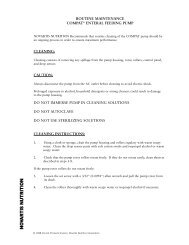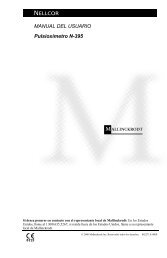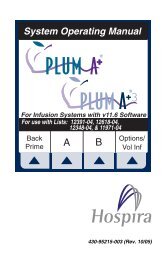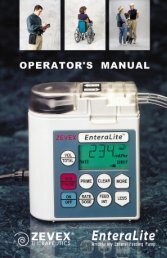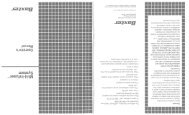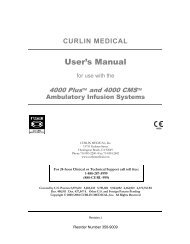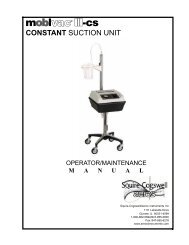LP6 Plus Volume Ventilator -And- LP10 Volume Ventilator With ...
LP6 Plus Volume Ventilator -And- LP10 Volume Ventilator With ...
LP6 Plus Volume Ventilator -And- LP10 Volume Ventilator With ...
You also want an ePaper? Increase the reach of your titles
YUMPU automatically turns print PDFs into web optimized ePapers that Google loves.
Responding To Alarms<br />
Responding To Alarms<br />
Page 36<br />
<strong>LP6</strong> <strong>Plus</strong> and <strong>LP10</strong> User’s Manual<br />
The ventilator has visual and audible alarms. The audible alarm is usually<br />
a pulsating tone. Both the ventilator and the remote alarm emit these<br />
tones. Flashing or steady light(s) on the ventilator indicate the source of<br />
the problem. These alarms alert you or your caregiver that the ventilator<br />
requires attention. These are the types of alarms.<br />
A Pulsating Audible Alarm and Flashing Light(s)<br />
The Low Pressure/Apnea, Low Power, High Pressure, Setting Error, and<br />
Power Switchover alarms all use this type of alert signal.<br />
A Steady Audible Alarm and Steady Lights<br />
This combination indicates a detected microprocessor error in the ventilator.<br />
Single Reminder Tone<br />
A single tone sounds every five minutes when the internal battery powers<br />
the ventilator.<br />
Warnings All alarms indicate a potential risk to patient safety. When an<br />
alarm sounds, provide immediate attention and support to the<br />
patient as dictated by the situation.<br />
Any device is subject to unpredictable failures. To ensure patient<br />
safety, an appropriately trained caregiver should monitor ventilation.<br />
If the patient’s condition warrants the use of a secondary,<br />
remote alarm, or another external monitoring device the physician<br />
should prescribe it. The physician should also determine to<br />
what level the patient may require an alternate means of ventilation.<br />
When any alarm sounds:<br />
First, attend to the patient immediately. Then, check the flashing or<br />
steady light(s) on the ventilator to identify the source of the problem.<br />
You may press the Alarm Silence/Reset button to silence the alarm. This<br />
silences the audible signal for one minute. If the alarm condition is corrected<br />
during that minute, the alarm light will turn off.<br />
A microprocessor error cannot be silenced. You cannot silence an alarm<br />
before it occurs.<br />
June 1999


